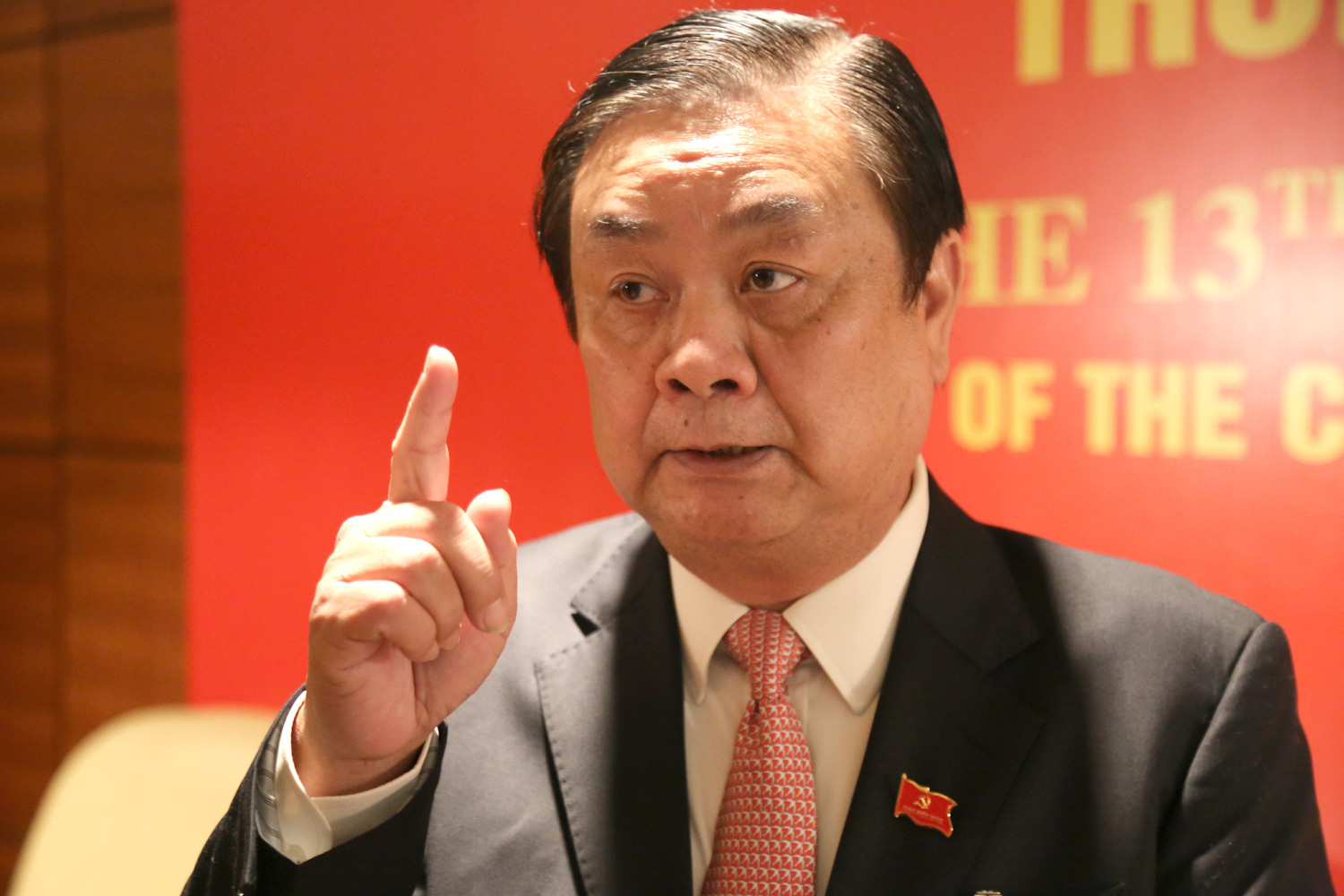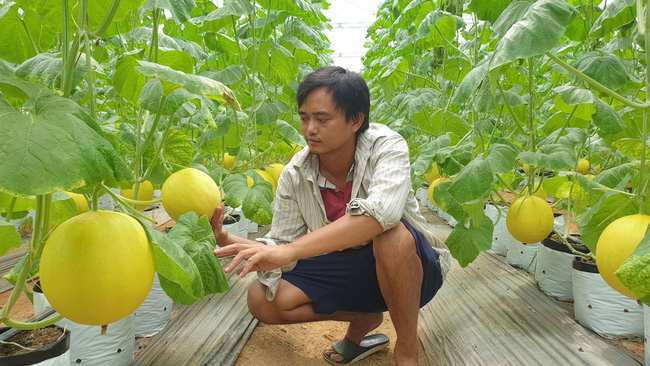Source: Danviet.vn
On January 29, on the corridor of the XIII Congress of the Party, Mr. Le Minh Hoan, Member of the Party Central Committee, Deputy Minister of Agriculture and Rural Development had a discussion with the press around the story of agricultural development.
Together, create a common aspiration for the country
Sir, in order for many businesses to participate in agricultural production, they must accumulate land, so what is the mechanism for enterprises to accumulate and rent land for longer to create infrastructure for large production?
– There are 2 business models investing in the agricultural sector. In the first model, the enterprise wants a large land area of 1,000 hectares or even a few thousand hectares to create a stable raw material area for them to invest in processing factories.
But in contrast, there is a model that does not need much land, for example Mr. Dinh Cao Khue – Chairman of Dong Giao Export Food Export Joint Stock Company. This place does not need a large area of land but creates the linkage of the surrounding material areas of the cooperatives in Gia Lai.
Deputy Minister of Agriculture and Rural Development Le Minh Hoan gave interviews to the press on the corridor of the Congress XIII. (Photo: HP)
So each way of doing has a different direction and regardless of direction, how do we have to think about the story of farmers cultivating that land, maybe they rent out, maybe they sell by themselves. books were set up to large-scale production enterprise. But the problem of how the peasants there should be asked.
If farmers let businesses accumulate a large area of land for large-scale production while farmers go out to find jobs, it is not good, because not all farmers can go to the factory to work.
If enterprises invest in agriculture only create large-scale production, it will not create many jobs, because sometimes large-scale production will apply modern technology instead of using 100 The waterer only needs 1 person to operate the watering machine. As a result, farmers are out of work.
From that problem, I often talk with localities when businesses invest in agriculture. We need to encourage businesses to create chains because in that chain of industries, many jobs will be created. Thus, it is possible to both attract young knowledge to join the commodity chain and at the same time bring old farmers who cultivate their land to work in the chain through business training as well as training. State training, career training policy, career change.
Farmers have leased land to businesses or transferred land to businesses, now based on their health and other conditions, they will have respective jobs.
State and business will support the farmers to change careers. I think that a business story that invests in agriculture like that creates sustainable development.
Concerning this issue, I often say that not to let social consequences happen in the countryside. We need to sit down calmly to analyze each investment project in the agricultural sector on the basis of a philosophy, a growth mindset. It’s not just how much growth is the goal, but how many jobs does that growth create? That is what matters.

Deputy Minister of Agriculture and Rural Development Le Minh Hoan:. (Photo: HP)
Previously we calculated how much growth was% GDP, but with a new mindset attached to growth% of GDP, how many jobs must be created for society, that is important. Because so we can solve social problems. If GDP growth is in a different group of people, and that GDP growth lies in many people, the problem will be very different.
It can be said that this is an issue that we need to sit and analyze, how to fulfill the leading role of businesses in the process of agricultural restructuring but not to let farmers be left behind in that process. .
How do you evaluate the activities of large enterprises investing in the agricultural sector recently? Have they done well or not, what else needs to be overcome, sir?
In general, we have had a breakthrough in the last term in attracting investors into the agricultural sector. Personally, I wish that all those corporate investors must link together, become an ecosystem so that they can go together for sustainable development, but not everyone.
Maybe businesses invest in agriculture from fruit trees, pangasius, coffee, cashew. The problem they have to cooperate with each other, do not divide, compete with each other. Businesses think about the interests of farmers, about the agriculture of the country before thinking about profits. If together we create a common aspiration for the country, we will help it spread, create a brand for each business.
“Sparrows”, if combined, will create high efficiency and spread
Many large private corporations have invested in the agricultural sector and they are very interested in investing in this field, why is that?
– A very good sign is that large corporations that were not previously involved in agriculture have recently invested in this area. They still identify agriculture is not an immediately profitable field and also has many potential risks.
But here and there, I see many enthusiastic enterprises that want to return to invest in agriculture not only to enrich themselves but to create a push to change Vietnam’s agriculture. That is the highest value of private enterprises investing in Vietnamese agriculture.
From that value, enterprises in recent years have created a position to bring Vietnamese agricultural products abroad as well as to process agricultural products with higher added value.

The high-tech membrane house model is being applied by many farmers in Thanh Hoa due to high economic efficiency and environmental protection. Photo: PV
We appreciate the contribution of the business community to invest in agriculture because agricultural restructuring requires people to lead, that is, businesses. However, I also want to share that, in nature, too, there are “eagles” and there are “sparrows”.
We want to have more “eagles” to lead, but we must not forget the “sparrows” – these are cooperatives, small and medium enterprises investing locally, although the value may be Not high, but if the “sparrow” works together, it will create a high spread effect.
Innovation or entrepreneurship programs in the agricultural sector will also be a priority in the agricultural sector in the coming time. Businesses, young people who return from big cities, absorb knowledge, when they start their business in specific fields of agriculture from sorting, preserving, distributing products, and e-commerce. .. will have a pervasive effect in the community as “eagle”.
If we merely cultivate and create output, we do not need information technology, biotechnology, the food industry …
If we move all the factors such as bringing technology back, bringing in small and medium enterprises, we will attract young intellectuals to the place where you are born. If so, one day, we will no longer have to “cheat” the story of young people leaving their fields, leaving their hometowns, leaving villages to industrial parks in Binh Duong, to Dong Nai, to Hai Duong … .
That trend, that transition, every country has. So we must have policies like to activate small and medium enterprises, start-ups in the localities, the state management agencies must propose to the Government. The more local small and medium enterprises, the more investors coming to them will have an ecosystem around them, there will be small and medium enterprises taking on steps that large enterprises cannot do.
When we create an ecosystem of startups in the agricultural sector is also a condition to lure “eagles” to nest. From there, we can both create value for the business and create value for the farmer.
